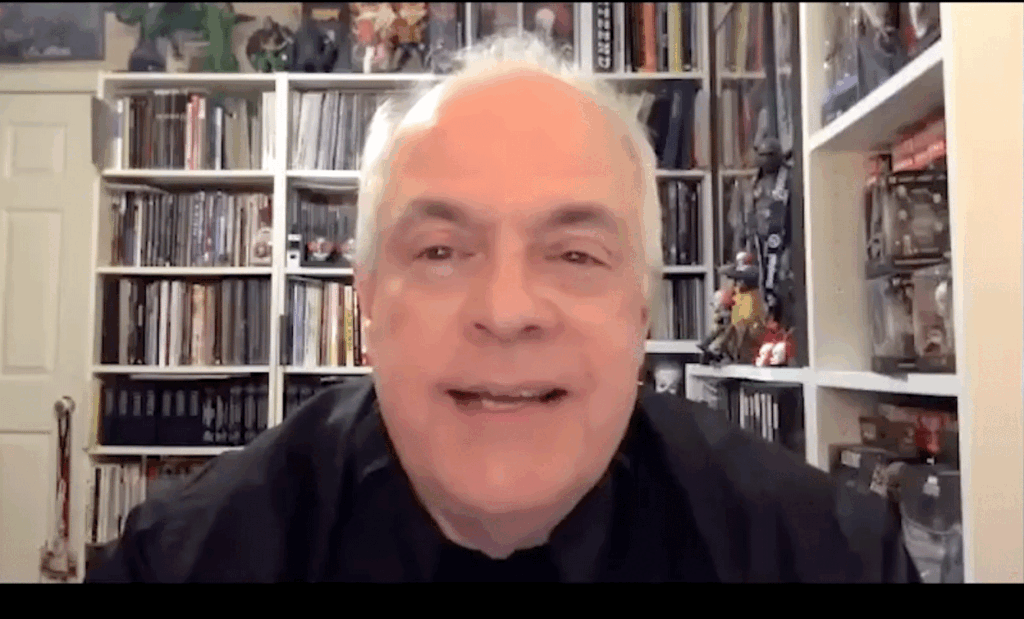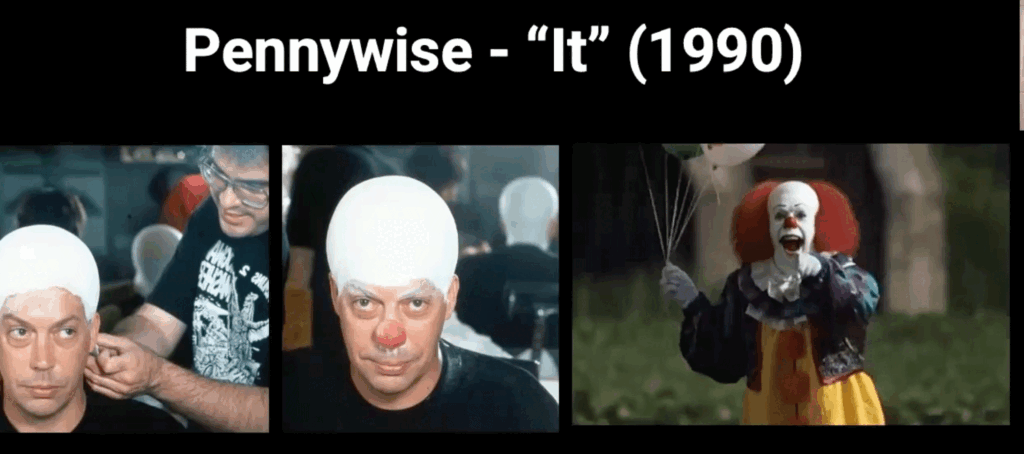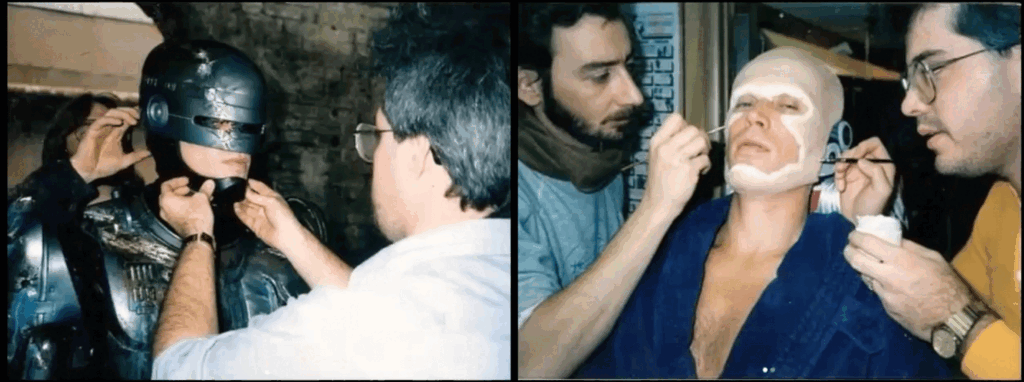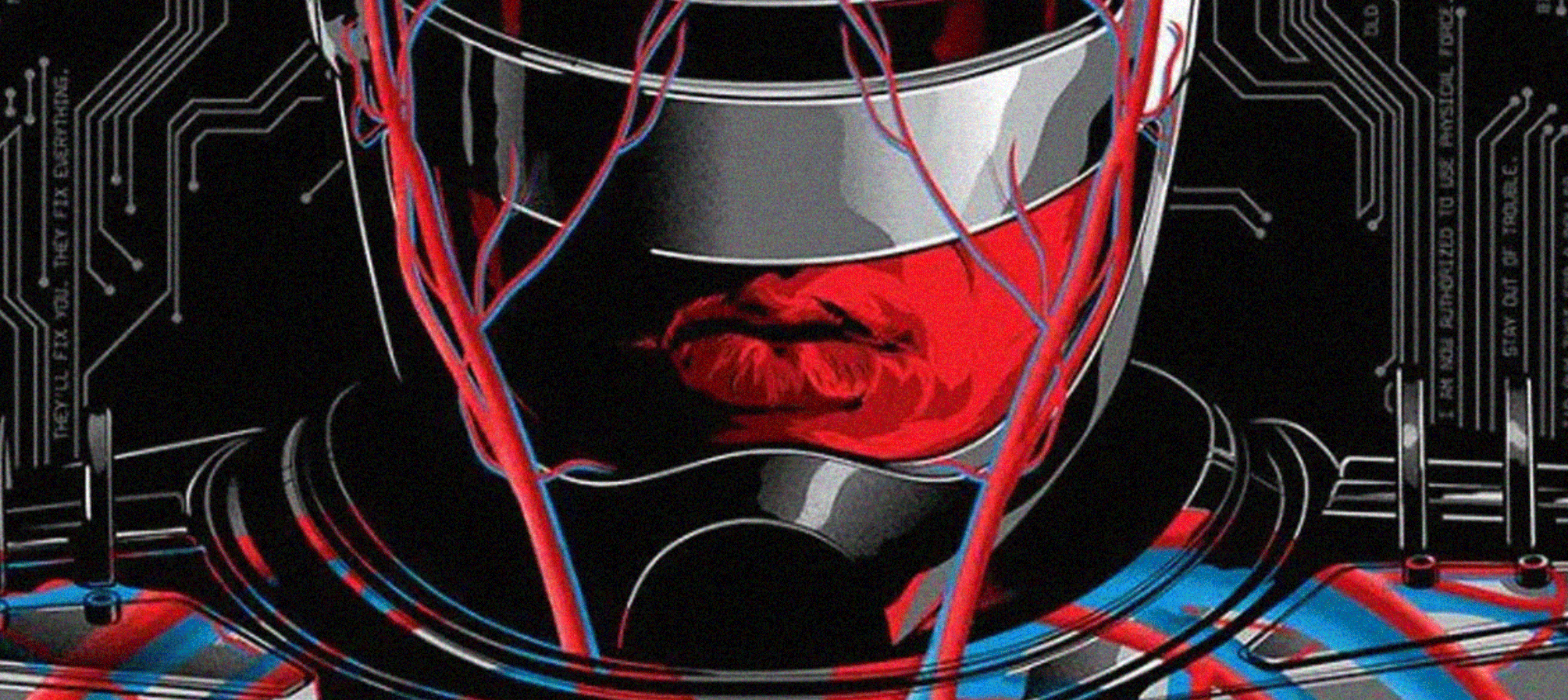By J. Elliott Mendez
“They called us ‘Monster Kids’ in the ’60s. I read famous monster magazines and collected Marvel Comics…”
Special effects make-up artist Bart Mixon is a legend in the industry, having worked on some of the most iconic films of the past few decades. On February 9, the School of Visual Development (VIS) welcomed Mixon to their Film Appreciation Night for a live Q&A session where he discussed his work on “Robocop.”
Google will tell you his career began in the early ’80s. But Mixon said it really began when he was a kid growing up in Texas in the ’60s, with monster magazines and comic books. His love for the comic book medium and developing passion for special effects led him to be a part of a club whose members would often sponsor conventions in Houston. It was at a convention in 1977 that he met producer, actor, and make-up artist Rick Baker. In ’78, Baker introduced Mixon to Rob Bottin, the designer who would go on to bring “Robocop” to life with the help of Mixon eight years later.
“I had been making my own Super 8 amateur movies with my twin brother,” shared Mixon. “I’m self-taught, just kind of picking stuff up as I went along. Rick Baker gave me his contact info, so I corresponded with him for the next few years. Had Rick not introduced us, [Rob] wouldn’t have known I existed. So just a lot of being in the right place at the right time.”

Mixon’s talent for creating realistic and terrifying creatures led him to work on a variety of films that run the gamut from horror to superhero, including “A Nightmare on Elm Street 4: The Dream Master,” “Hellboy,” and even “Planet of the Apes” (2001). His attention to detail and ability to bring fantastical creatures to life earned him a reputation as one of the top special effects make-up artists in the industry, with his most iconic design for any generation being that of Pennywise, the killer clown from the original 1990 version of “It.”
But before delving into his ideas behind that design, Mixon spilled a little tea from the set of “Nightmare on Elm Street 2.”
“The producers saw little merit in bringing back Robert Englund,” revealed Mixon. “They were like, ‘It’s just a guy in makeup; he’s in the dark; why don’t we just get a stunt guy and save some money?’ It was jaw-dropping. Like, you guys don’t even know why we’re here making the second movie, how key he was to the success of that first film.”
Mixon said that not allowing Englund to reprise his role as Freddy Krueger would have, in his words, “killed the franchise right there.” He noted just how important the actor underneath the make-up actually is to the character and story.

“Most of these classic makeups—they’re actor-driven. They might be in super heavy make-up… [but] you need an actor to project through that. You need an actor of that caliber—Robert Englund as Freddy, Ron Perlman as Hellboy, Tim Curry, and the various roles he’s done. You need a strong performance to bring the makeup to life. Otherwise, it’s just a mask.”
The event’s moderator, VIS Assistant Director Christopher Carman, was quick to note that Mixon designed the Pennywise makeup “from paper to application.” It’s well documented that the design he came up with was “stylized Lon Chaney, ‘Phantom of the Opera.’” In its final iteration, the decision was made to lose the pronounced cheekbones and chin, which Mixon admits was the right choice looking back, even if he didn’t agree with it at the time. But what is lesser known is his thinking behind the design. Mixon envisioned a Pennywise whose appearance would change based on the children’s age and understanding.
“My original concept for Pennywise—I wanted him to look like the friendly clown when the kids saw him. But when the adults saw him 30 years later, I wanted him to be this horrific caricature of a clown,” explained Mixon. “Because, at that point, the adults know. Pennywise knows the adults are on to him, so there’s no real reason for him to be a friendly clown.”

Another one of Mixon’s most famous projects was the 1987 film “Robocop.” The suit was extremely heavy and difficult to maneuver. Mixon had to work closely with Peter Weller, who played the titular character, getting him in and out of the suit in Texas summer heat. Mixon recalled the actor having to don the suit in a very specific order, and during his first day on set, Weller insinuated that Mixon might not be up for the job.
“I remember Peter was kind of going, ‘I don’t think this Bart guy’s getting it,” Mixon recalled. “But by the end of the week, I was the only guy, as he put it, that had the upper body strength to get him in the suit.”
Mixon’s commentary—both fascinating and enlightening—spoke of a career derived from a genuine passion for the craft. With decades of experience in the industry, Mixon proves to be an inspiration for anyone looking to break into the world of special effects makeup while remaining appreciative of his success and the partnerships he’s had along the way.
“I don’t think anyone expected it to be the lasting thing that it is. It’s definitely one of the high points of ’80s science fiction,” said Mixon. “It was a dream come true to work on, especially that early in my career. I had a great time, and I’m not lying! For it to turn out to be such a great movie is just icing on the cake.”
Watch the full conversation with Mixon: https://video.academyart.edu/media/Bart+MixonA+RoboCop+Appreciation/1_oojii0ze
